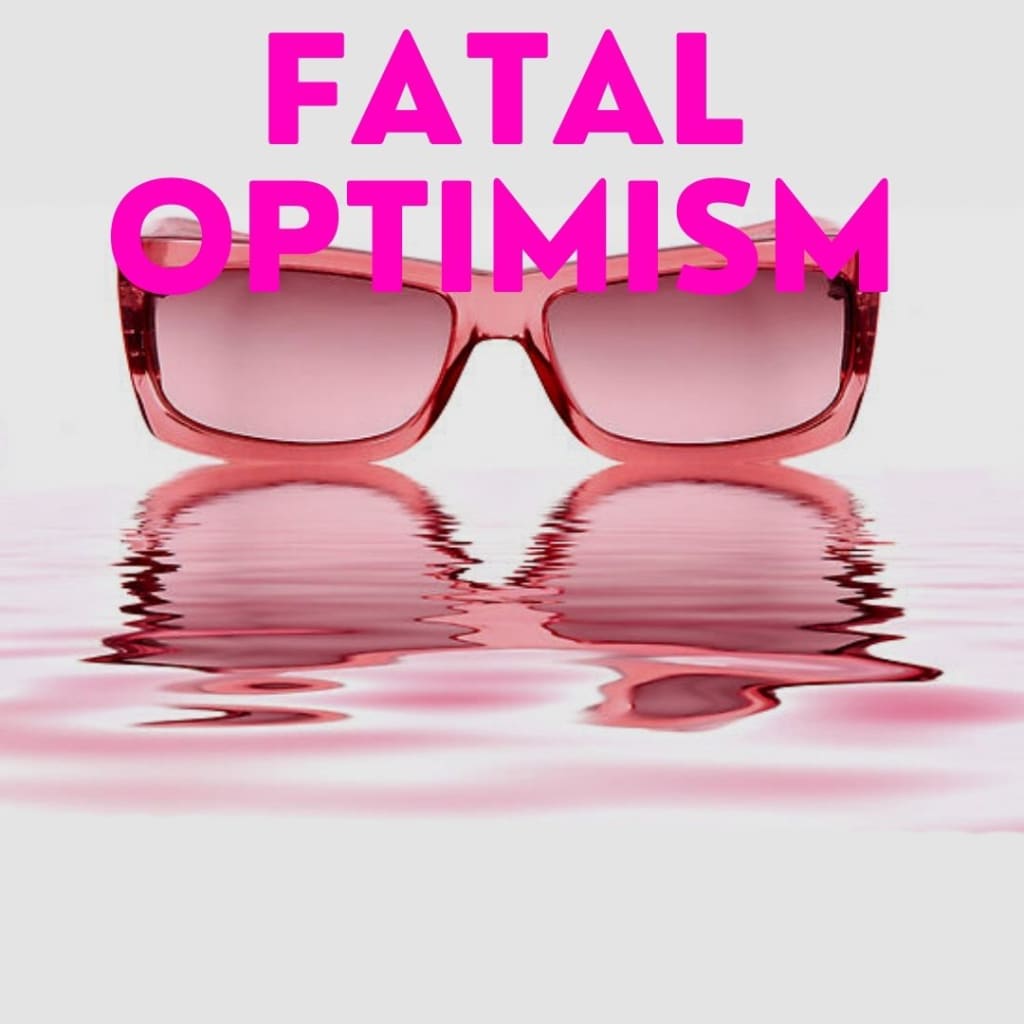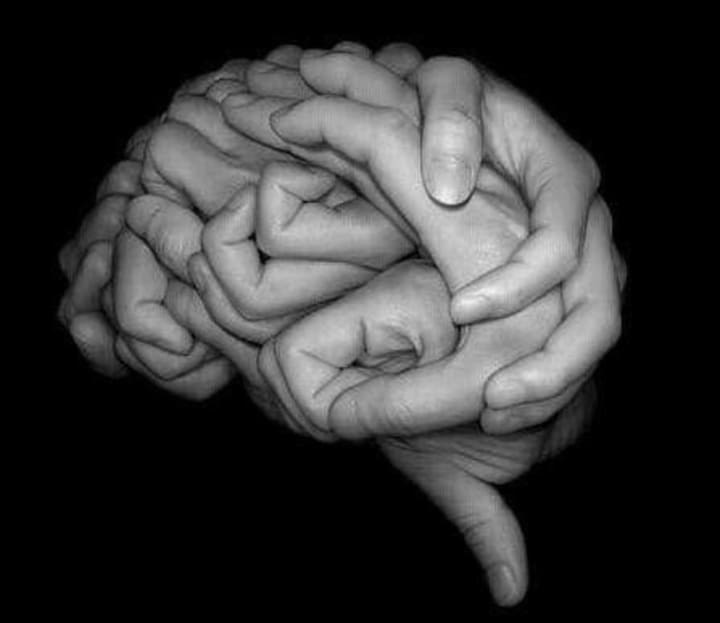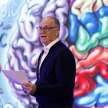
Some years ago, when my son, Josh, was small, I listened to him and his friends playing football in the garden. There was a noisy running commentary, and then a furious argument exploded. Was it a goal, or did the ball hit the post? The post was a T-shirt on the grass.
The fantastic thing is they had lost the football sometime earlier over the fence into the neighbour's garden. So they were playing this game without a ball. They were arguing about a shot that didn't happen, with a ball that wasn't there, in a goal that had no post!!

Imagination and creativity are powerful things; they shape the world as we wish to see it, but to harness them, you need a dose of optimism.
It's not our rational minds that shape the world; it's our irrational optimism and a belief that the future can improve the past.
This blog is in praise of the designers, in all their shapes and forms, who believe that they can change the world, one tiny step at a time.
"The people who are crazy enough to think they can change the world are the ones who do."
Steve Jobs
Nowadays, we get taught that rational thinking and calculation are more desirable than emotion and creativity. Yet creativity looks forward to what might be, and analytical thinking looks backward at what was.
Creative thinkers learn to trust their "intuitions" and, most notably, to manipulate their emotions to plan a future event. Planned action is a quintessential human quality and necessarily optimistic. You have to believe a future can become a reality. If you didn't believe in the possibility, then you wouldn't even try. If you didn't try and sometimes fail, then nothing would change, and we would be stuck where we started.
Where innovation is optimistic, evolution is blind. Innovation sees a future different from the present; evolution sees only the present and carries its past. Innovation speculates, evolution optimises.

The brain is our only way of understanding the entire universe, our world, our cities, our societies, our friends, our loves, hopes and desires, emotions, memories, identity, and vision of the future.
It functions 24 hours a day, from the day we are born and only seems to stop when we take exams, fall in love or die.
It's hard-wired for innovation and predicting the future to make meaning out of events that we weave together into stories. The patterns we see allow us to predict a future event and see how that may be different if we interrupt the pattern or combine it with a new pattern.
Optimism is the scaffolding for cultural change. Innovations are the structures we create. The ability to plan a future different from the present is a quintessentially human quality.
Optimism is, by definition, a positive belief in what is yet to come. It is an evolutionary survival strategy. Without optimism, our activities and cognitive functions would grind to a halt. We would have no interest in predicting a positive outcome in our future. Things would never change, and we would be roaming the savannah aimlessly. We would be locked in the present moment. There would be no change, no progress, no culture and certainly no iPhone.
Optimism enables people to embrace their goals and stay committed to moving towards them. Fortunately for us, we are hard-wired with an optimism bias that helps us believe in our ability to manipulate the future, which happens mostly automatically, without our conscious control.
If you were to ask a millipede which foot to put first, he would get so confused thinking about it that he wouldn't be able to move. We don't need to think about everything. Most thinking happens without our conscious involvement.

Conscious thinking is slow and confusing because, like my children, it talks far too much. It wants answers to questions that our brains don't need to think about. It nags us. It conflicts with us.
Yet we need some conscious thinking to be able to make plans, to be able to visualise the future. If we only had analytical thinking, we would calculate all the infinite possibilities of something happening. But, in the meantime, the sabre-toothed tiger would have pounced, and we would be dead.
Fortunately, something quicker lets us know what to do: emotion, the pursuit of pleasure and homeostasis.
Pleasure and homeostasis, or what might be called "balance", are states we are constantly trying to regain. Our biology is continually trying to keep us within a very narrow bandwidth, but our restless minds.
From the moment we are born, raw emotions gradually give way to conscious thinking as we gradually attach more and more meaning to the patterns we make in the world around us. Thus, from childhood, the brain becomes less of a sponge and more of a yardstick. Less conscious control equals less "brain" activity and, therefore, more emotional ascendancy.
Pleasure, fear and creativity are the bedfellows of emotion.

So, when we think creatively, we enter this "child-like" state of mind. Emotions are raw and free association is more readily achieved because we are not locked into large clusters of obsessive, repetitive neuronal activity. Depression sits at the opposite end of the scale, where prominent constellations of obsessive, pessimistic, repeating thought patterns overwhelm the mind with a sense of not controlling the future. A creative mind-state is more like someone on morphine or cocaine; more straightforward, optimistic, pleasure-seeking, sensory, and belief in shaping the future.
Our emotional experiences, beliefs, and brains' natural biases, including our optimism, influence how we see. It's NOT "seeing is believing"; rather, it's "BELIEVING IS SEEING".
If you change the way you look at things, the things you look at change.
We don't see things as they are; we see things AS WE ARE.
Talmud
The brain is a pattern-making storyteller. It works around the clock stitching together a pattern of logic on sensory information to which it then attributes meaning. Thus, we find meaningful patterns in both meaningful and meaningless data.
Evolution favours pattern-seeking because it allows the possibility of reducing mysteries to fast, efficient programs and learning in our neural circuitry. Moreover, it will enable us to predict a future. Prediction gives space to our natural optimism bias.
Our perceptions about reality are dependent on the beliefs we hold. The interpretations of our minds guide our senses.
"You can't depend on your eyes if your imagination is out of focus".
Mark Twain
Our life experiences form our beliefs. These then reinforce our existing beliefs, which strengthen our attitudes and thus our emotions, because emotions are about things we care about. Beliefs actively look for facts to fit their needs; reason depends on belief. Beliefs convert inputs into meaningful narrative stories.
Innovation and optimism are social skills that influence how people behave and how they come into contact with the world. So we tinker, we innovate, we influence.
The Optimism bias is a cognitive illusion; we are blind to it. We are forecasters and mental time-travellers, skills that have been crucial for our survival and success. they allow us to plan ahead and forecast how a current behaviour may influence future behaviour.

Optimism is a belief in a positive future; otherwise, why bother to create? It wouldn't make any difference. We would be locked in the present moment with an identical past. Optimism is future planning.
Believing that a goal is attainable influences the events they predict. They become self-fulfilling prophecies. An initially false definition of a situation, by evoking new behaviour, makes the initially false conception true. False hope is better than no hope at all. Prophesy Propagates the Probable.
A likely impossibility is always preferable to an unconvincing probability.
People tend to be more optimistic about things they believe they can control. When we think that our fate is in our own hands, we are more likely to think we can steer the wheel in the right direction.
We hold an optimistic bias about our future, yet we often hold a pessimistic bias about everyone else's. But, of course, it's always helpful to believe that everyone else is doing badly too. Pessimism and depression are the feelings of lack of control; what's the point, it's going to happen anyway, and I cannot change it!! Antidepressants do not alter the patient's mood; they change the cognitive basis by which it understands the world.
When our prophecies fail, we simply reframe them.
There was a cult in the 1950's that believed that aliens had sent doomsday information to their leader. Doomsday didn't happen.

Instead of abandoning the cult, members reframed their belief. It was their unshaken faith that had saved the world from destruction. Their Cognitive dissonance was resolved by adopting new ideas. They positively, optimistically, reframed the situation to be able to continue into the future.
Our naturally optimistic bias means we overestimate the probability of positive events and underestimate negative ones. We tend to view the past as a concentrated timeline of emotionally exciting events; we remember the arousing bits and forget the boring bits. An imprecise picture of the past may be one reason for our inaccurate forecasts of the future.
We over-predict future happiness and success because doing so keeps us healthy and makes progress more likely. If I ask you now to close your eyes and imagine your future, most of you will probably picture something good.
Pessimists will see the difficulty in every opportunity and will thus be unlikely even to try! Optimists will see the opportunity in every difficulty.
Belief, imagination and creativity are powerful things; they shape the world as we wish to see it.
Beliefs are our past, but they shape our future. Optimism drives our future. Optimism drives us to create. Optimism creates and shapes cultures. Optimism is an evolutionary survival strategy.






Comments
There are no comments for this story
Be the first to respond and start the conversation.